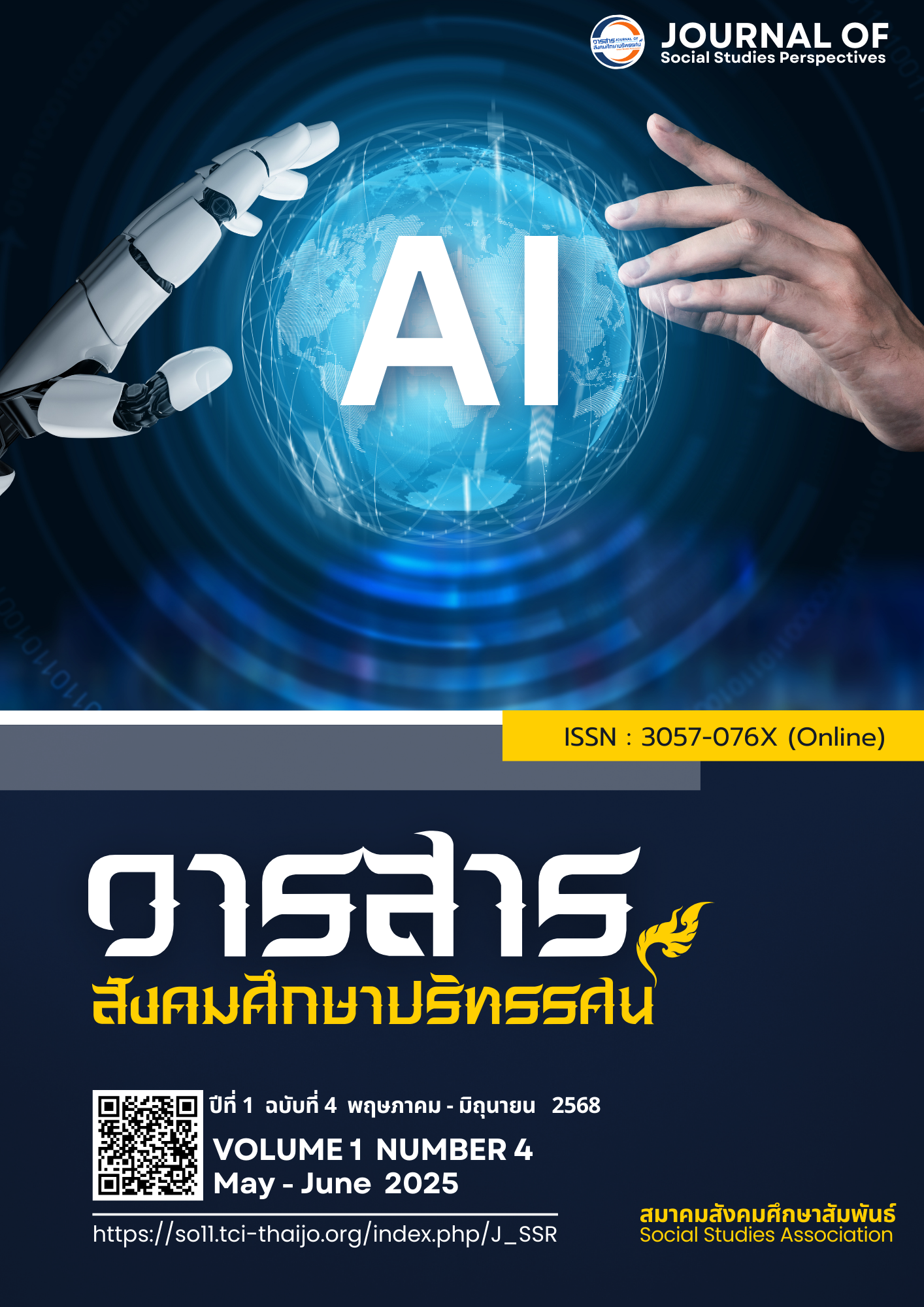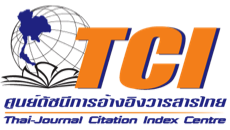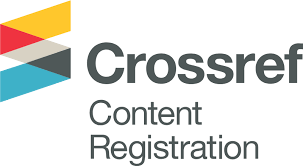วิเคราะห์ทฤษฎีสามองค์ประกอบ : ความเหมาะสมในการวัดความผูกพันต่อองค์กร
DOI:
https://doi.org/10.64186/jsp1330คำสำคัญ:
ทฤษฎีสามองค์ประกอบ, ความผูกพันต่อองค์กร, การบริหารทรัพยากรมนุษย์ , พฤติกรรมองค์การ , แบบสอบถามความผูกพันต่อองค์กรบทคัดย่อ
บทความวิชาการนี้มีวัตถุประสงค์เพื่อศึกษาทฤษฎีสามองค์ประกอบของ Meyer and Allen เป็นกรอบแนวคิดที่ได้รับการยอมรับอย่างกว้างขวางในการศึกษาความผูกพันต่อองค์กร โดยแบ่งออกเป็น 3 มิติ ได้แก่ ความผูกพันด้านความรู้สึก (Affective Commitment) ความผูกพันด้านการคงอยู่ (Continuance Commitment) และความผูกพันด้านบรรทัดฐาน (Normative Commitment) ทฤษฎีนี้ช่วยให้เข้าใจพฤติกรรมของพนักงานในมิติที่หลากหลายและเป็นเครื่องมือสำคัญในการบริหารทรัพยากรมนุษย์ โดยเฉพาะในด้านการพัฒนากลยุทธ์เพื่อเพิ่มประสิทธิภาพการทำงานและลดอัตราการลาออกของพนักงาน บทความนี้นำเสนอ 1) แนวคิดพื้นฐานของทฤษฎีสามองค์ประกอบ 2) การพัฒนาเครื่องมือวัด เช่น Organizational Commitment Questionnaire (OCQ) 3) การประยุกต์ใช้ในบริบทต่าง ๆ 4) ข้อดีและข้อจำกัดของทฤษฎี และ 5) แนวโน้มการวิจัยในอนาคตเกี่ยวกับการวัดและพัฒนาความผูกพันต่อองค์กร องค์ความรู้จากบทความนี้จะช่วยให้นักวิจัย นักวิชาการ และผู้บริหารองค์กรสามารถนำไปใช้ในการออกแบบกลยุทธ์เพื่อเสริมสร้างความสัมพันธ์ระหว่างพนักงานกับองค์กร โดยเฉพาะอย่างยิ่ง การประยุกต์ใช้ทฤษฎีนี้สามารถช่วยในการออกแบบโปรแกรมการพัฒนาบุคลากรที่ตรงกับความต้องการของพนักงานแต่ละกลุ่ม เช่น การสร้างโอกาสในการเติบโตทางอาชีพสำหรับพนักงานที่มีความผูกพันด้านความรู้สึกสูง หรือการปรับปรุงสวัสดิการเพื่อรักษาพนักงานที่มีความผูกพันด้านการคงอยู่ นอกจากนี้ ยังสามารถนำไปใช้ในการพัฒนาระบบการประเมินผลงานที่สอดคล้องกับระดับความผูกพันของพนักงาน ซึ่งจะช่วยลดอัตราการลาออกและเพิ่มประสิทธิภาพการทำงานในระยะยาว
เอกสารอ้างอิง
Donthong, S. (2022). Quality of work life and organizational commitment related to work efficiency and organizational loyalty of Generation Y private company employees in Bangkok. Srinakharinwirot University.
http://ir-ithesis.swu.ac.th/dspace/bitstream/123456789/2456/1/gs641130118.pdf
Eagly, A. H., & Chaiken, S. (1993). The psychology of attitudes. Harcourt Brace Jovanovich College Publishers.
Fu, F. Q., Bolander, W., & Jones, E. (2009). Managing the drivers of organizational commitment and salesperson effort: An application of Meyer and Allen's three-component model. Journal of Marketing Theory and Practice, 17(4), 335-350. https://doi.org/10.2753/MTP1069-6679170403
Jaros, S. (2007). Meyer and Allen model of organizational commitment: Measurement issues. ICFAI Journal of Organizational Behavior, 6, 7-25.
Karim, N. H. A., & Noor, N. H. N. M. (2006). Evaluating the psychometric properties of Allen and Meyer's organizational commitment scale: A cross cultural application among Malaysian academic librarians. Malaysian Journal of Library and Information Science, 11(1), 89-101.
Kasapradit, J. (2020). The influence of welfare and organizational culture related to employee engagement of academic supporting in Srinakharinwirot University. Srinakharinwirot University.
Khalip, N. (2016). A three-component conceptualization of organizational commitment. International Journal of Academic Research in Business and Social Sciences, 6(12). https://doi.org/10.6007/IJARBSS/v6-i12/2464
Lee, K., Allen, N., Meyer, J., & Rhee, K. Y. (2001). The three-component model of organisational commitment: An application to South Korea. Applied Psychology: An International Review, 50(4), 596-614. https://doi.org/10.1111/1464-0597.00075
Lertwuttiwongsa, M. (2021). Organizational commitment and quality of work life related to loyalty of private employees: A case study of a chemical distribution company in Bangkok. Srinakharinwirot University.
Meyer, J. P., & Allen, N. J. (1991). A three-component conceptualization of organizational commitment. Human Resource Management Review, 1(1), 61-89. https://doi.org/10.1016/1053-4822(91)90011-Z
Nontakaew Ferry, K. (2019). Building up organizational commitment of Generation Z. Journal of Social Innovation and Lifelong Learning, 13(3), 10-25. https://so01.tci-thaijo.org/index.php/FEU/article/view/155209/151418
Pureepitipat, S. (2020). The relationship between happiness at work and organizational commitment of Thailand Post Company Limited employees in Bangkok area. Srinakharinwirot University.
Samart, T. (2021). Organizational commitment of municipal personnel in Chonburi Province. Journal of Political Science and Interdisciplinary Studies, 4(1), 12-28.
Sanditi, K. (2020). Factors affecting employee engagement: A case study of the Business Stakeholder Engagement department of a company. Mahidol University.
ดาวน์โหลด
เผยแพร่แล้ว
รูปแบบการอ้างอิง
ฉบับ
ประเภทบทความ
หมวดหมู่
สัญญาอนุญาต
ลิขสิทธิ์ (c) 2025 วารสารสังคมศึกษาปริทรรศน์

อนุญาตภายใต้เงื่อนไข Creative Commons Attribution-NonCommercial-NoDerivatives 4.0 International License.
บทความนี้ได้รับการเผยแพร่ภายใต้สัญญาอนุญาต Creative Commons Attribution-NonCommercial-NoDerivatives 4.0 International (CC BY-NC-ND 4.0) ซึ่งอนุญาตให้ผู้อื่นสามารถแชร์บทความได้โดยให้เครดิตผู้เขียนและห้ามนำไปใช้เพื่อการค้าหรือดัดแปลง หากต้องการใช้งานซ้ำในลักษณะอื่น ๆ หรือการเผยแพร่ซ้ำ จำเป็นต้องได้รับอนุญาตจากวารสาร










